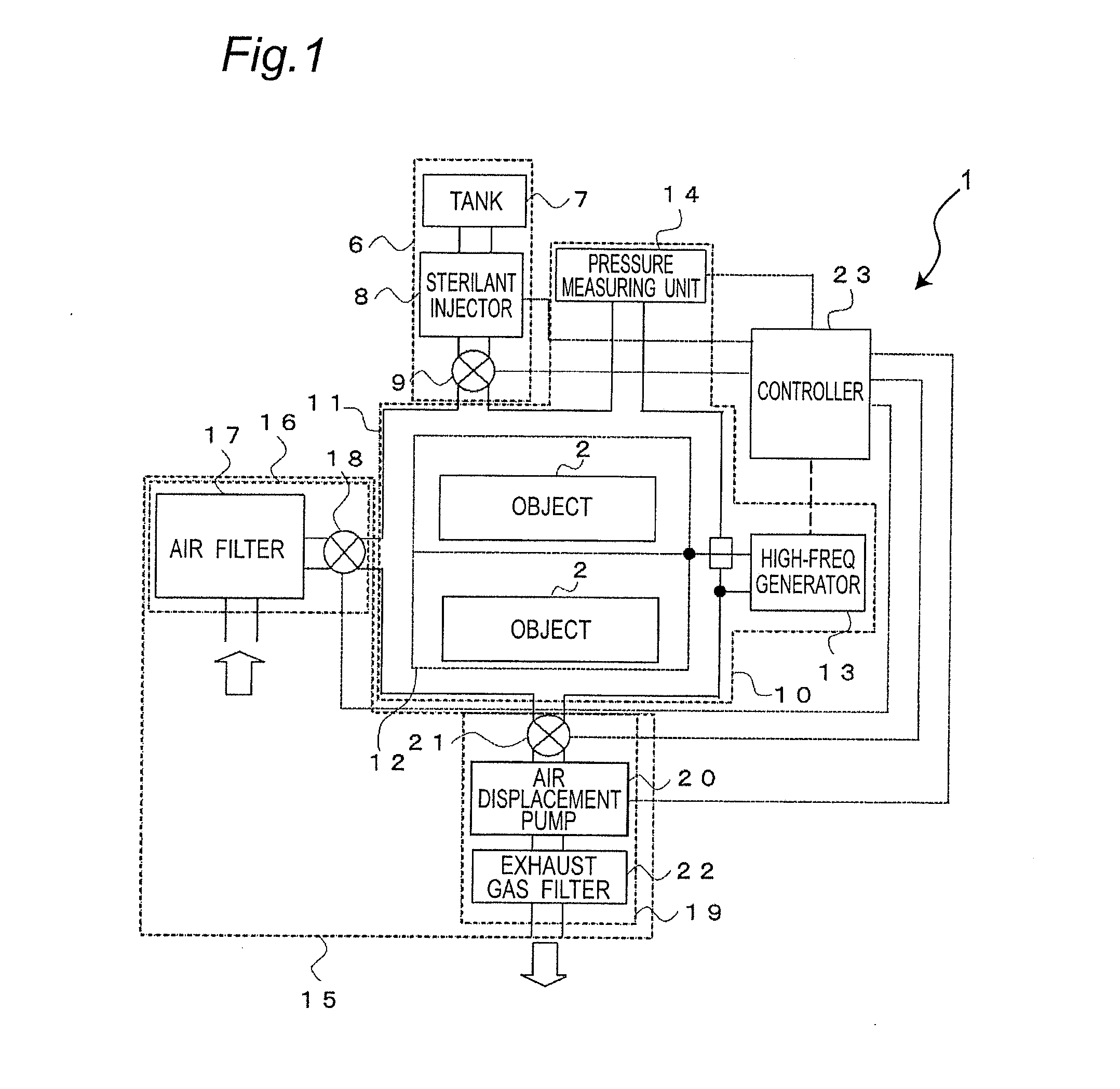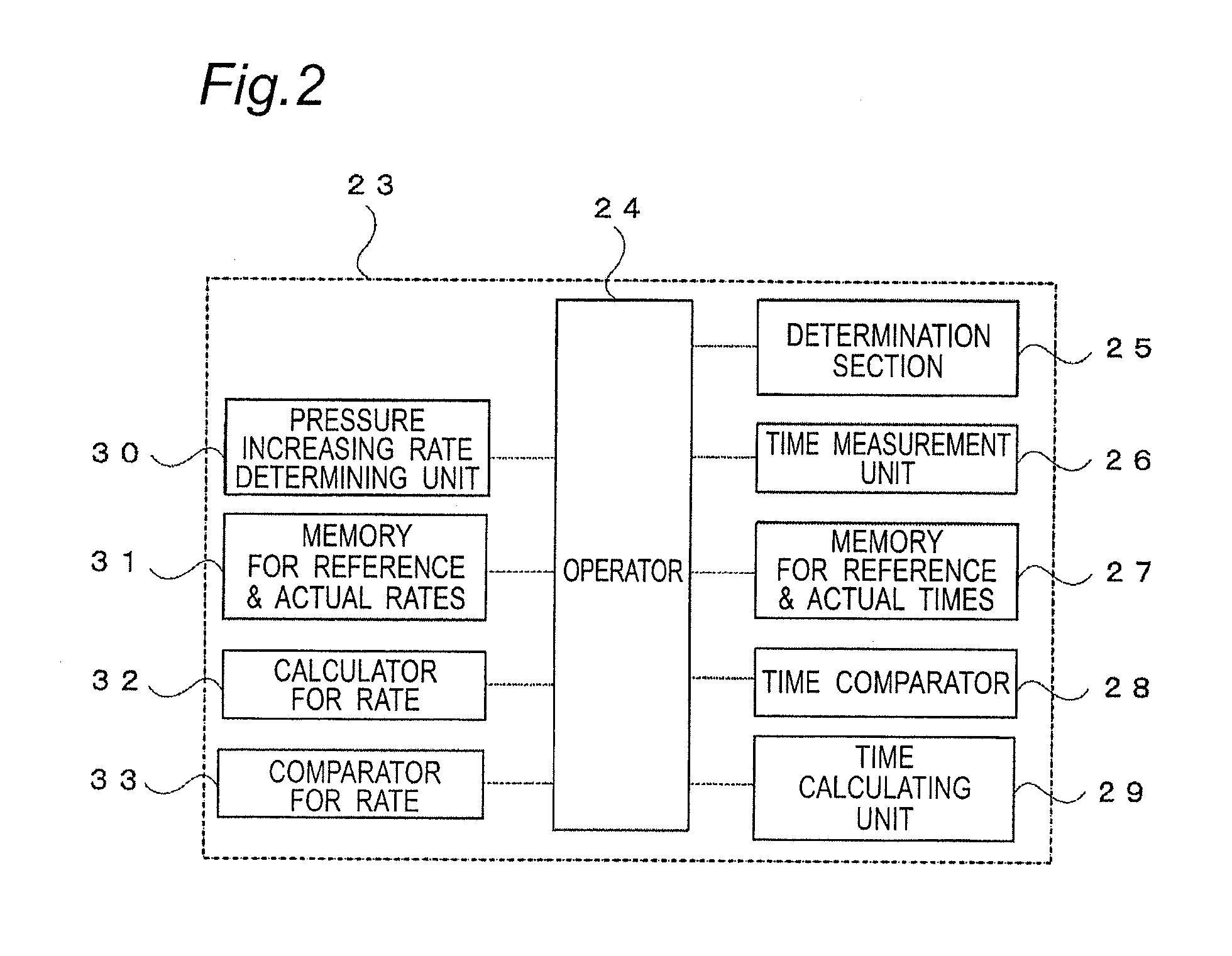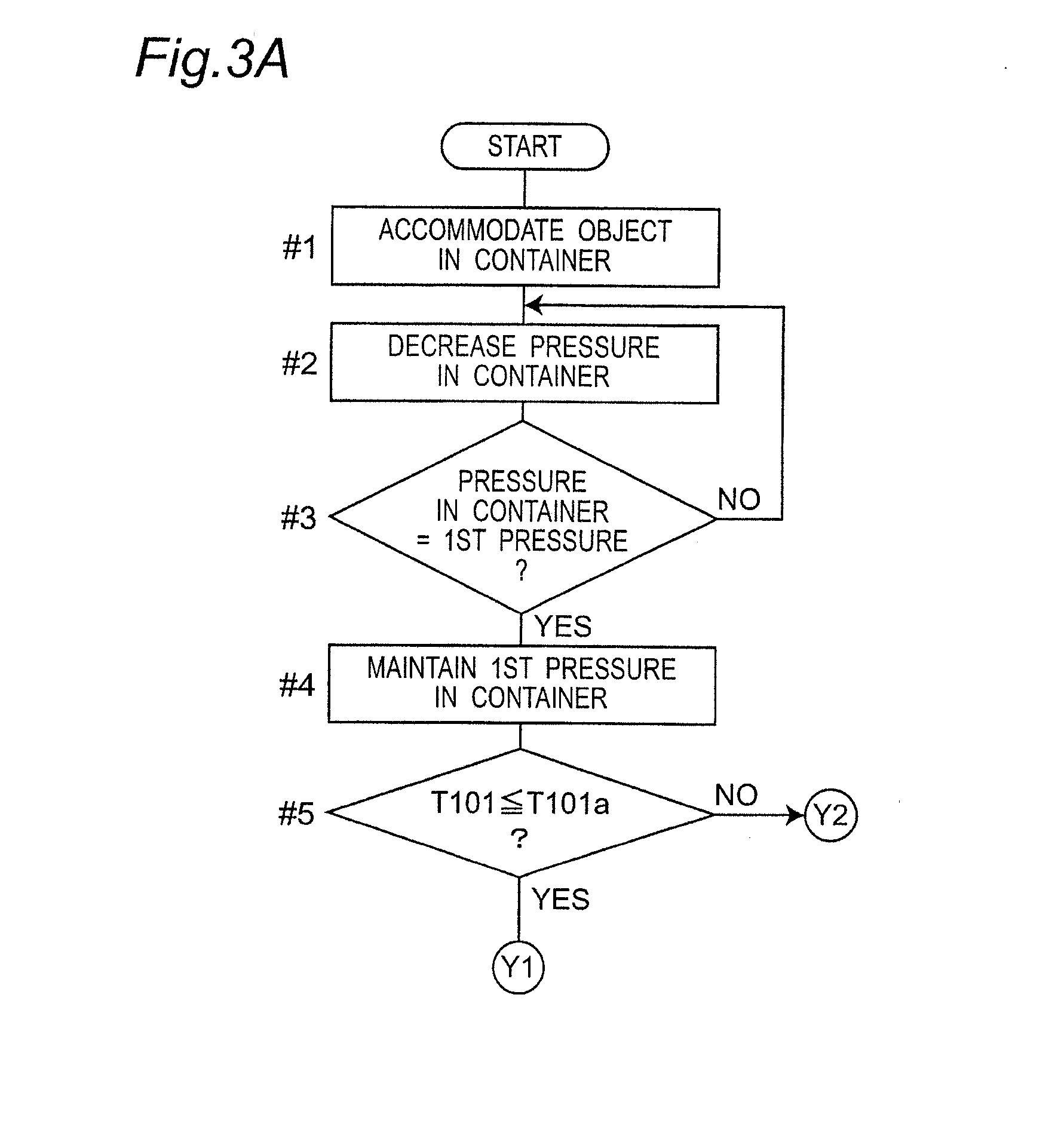Sterilization method and device
a sterilization method and a technology of sterilization, applied in the field of sterilization methods and devices, can solve the problems of electromagnetic radiation being inapplicable to other objects, inapplicable to conventional methods, damaged objects, etc., and achieves efficient and sure drained away, increase contact efficiency, and increase contact efficiency
- Summary
- Abstract
- Description
- Claims
- Application Information
AI Technical Summary
Benefits of technology
Problems solved by technology
Method used
Image
Examples
first embodiment
[0067]Descriptions will be made to the operation and control of the sterilizer 1 so constructed. FIGS. 3A to 3C are flowcharts illustrating the operation of the sterilizer according to the present invention. As illustrated in FIG. 3A, before driving the sterilization system, in step #1 the object 2 to be sterilized is accommodated in the internal box 12 of the container 11. In step #2, the air displacement pump 20 is energized to decrease the pressure in the container 11. Then, in step #3, a determination is made whether the pressure in the container 11 reaches the first pressure P101 which is equal to or higher than the triple point pressure of water.
[0068]The pressure in the container 11 is measured by the pressure measuring unit 14, and the measurement is transmitted to the controller 23. Based on the output signal from the operator 24 of the controller 23, the displacement pump 20 and the solenoid valve 21 are controlled so that the pressure in the container 11 is decreased to t...
second embodiment
[0075]Next, descriptions will be made to the operation and control of the sterilizer according to the invention with reference to flowcharts shown in FIGS. 4A to 4C. As illustrated in FIG. 4A, before driving the sterilization system, in step #31, the object 2 to be sterilized is accommodated in the internal box 12 of the container 11. In step #32, the air displacement pump 20 is energized to decrease the pressure in the container 11. Then, in step #33, a determination is made whether the pressure in the container 11 reaches the first pressure P101 which is equal to or higher than the triple point pressure of water.
[0076]The pressure in the container 11 is measured by the pressure measuring unit 14, and the measurement is transmitted to the controller 23. Based on the output signal from the operator 24 of the controller 23, the displacement pump 20 and the solenoid valve 21 are controlled so that the pressure in the container 11 is decreased to the target pressure, i.e., the first pr...
PUM
| Property | Measurement | Unit |
|---|---|---|
| pressure | aaaaa | aaaaa |
| pressure | aaaaa | aaaaa |
| pressure | aaaaa | aaaaa |
Abstract
Description
Claims
Application Information
 Login to View More
Login to View More - R&D
- Intellectual Property
- Life Sciences
- Materials
- Tech Scout
- Unparalleled Data Quality
- Higher Quality Content
- 60% Fewer Hallucinations
Browse by: Latest US Patents, China's latest patents, Technical Efficacy Thesaurus, Application Domain, Technology Topic, Popular Technical Reports.
© 2025 PatSnap. All rights reserved.Legal|Privacy policy|Modern Slavery Act Transparency Statement|Sitemap|About US| Contact US: help@patsnap.com



